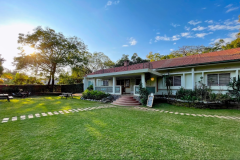Travel Guide Moshi
Find an accommodation
Advertising
Situated at an altitude of around 800 m, Moshi was a simple Bantu village in the mid-19th century, but it soon became one of the major centers of colonization, with German and then English farmers coming to cultivate the fertile land of the region, and missionaries coming to evangelize and instruct the Chagga populations who inhabited the first slopes of the Kilimanjaro massif. The town became an important trading point for agricultural produce from the large colonial farms, and a stopping-off point on the northern route between the coast and the Great Lakes. A railroad line was soon built here, linking Dar to Arusha and Mombasa, and allowing the town to expand rapidly in the 1920s.Today, Moshi is thriving as the region's commercial center, with a population of around 200,000 and many tourists coming to climb Kilimanjaro, of which it is the base, or simply to admire the mountain from its coffee plantations. But it has been overtaken by Arusha, 80 km to the west, boosted by safari tourism. A relatively large community of Western origin. Some are engineers for companies or NGOs in industry, public works, health or education, but many work for trekking agencies.Moshi is now a small town where a number of quality hotels have opened in recent years, offering guests the chance to rest before the climb, or simply to come and admire the nearby Kilimanjaro, permanently in the background.The Moshi region is also worth a visit. To the north-west of Shira, not far from Ol Molog, at Maua Farm, a large number of carved stones and fragments of pottery, some decorated, dating from the Neolithic period (3,000 BC) were discovered in 1972.On the south-eastern slopes of the mountain, around Marangu for example, or in the direction of Rombo, there are still some real Chagga huts, lost in the plantations, some of which are actually inhabited. These are sort of domed cones made of banana leaves, with a floor inside and a section reserved for the animals. To the east of the massif, not far from Himo, starts a track that leads, in just over 10 km, to Lake Chala, very deep according to the dark color of its waters, and housed in a superb crater with vertical slopes, on the edge of the Kenyan border, not far from Holili and Taveta. It's a wild and beautiful place, where very few people go, except on the Kenyan side (which is far away anyway). To get there, ask a local to guide you. Even further afield is Lake Jipe, measuring 5 km by 16 km, and slightly alkaline like all the volcanoes of the African Rift.
What to visit Moshi?
Advertising
Weather at the moment
Advertising
Organize your trip with our partners Moshi
Transportation
Book your plane tickets
Car Rental
Boat rental
Accommodation & stays
Find a hotel
Holiday rental
Find your campsite
Tailor-made trip
Immersion travel
Services / On site
Activities & visits
Find a doctor














